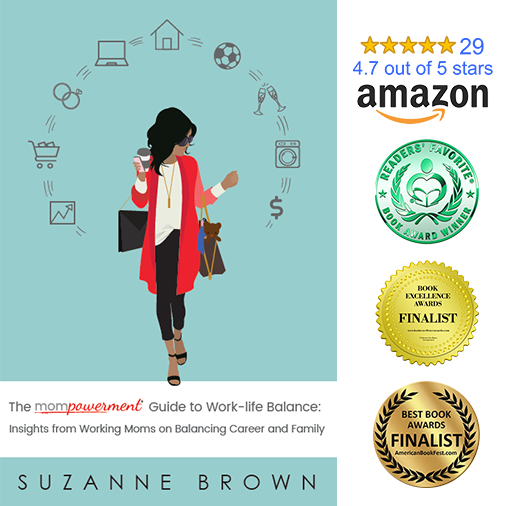
It’s the start of a new year and it’s not uncommon to want to make changes in how you look at money. I’ve asked Brian Walls, who is my tax and financial services expert (and a good friend), to share his insights. Why include this on Mompowerment? No question that part of wellness is your financial wellbeing. So, let’s get started on how you can set yourself up for financial success this year as a working mom.
Keep in mind that this post is about more than creating a budget. Yes, you’ll get an idea of how to approach creating a budget. And you’ll get ideas to help you figure out how to strategically align your budget with your needs now and long term.
Consider your priorities
What do you care about as a working mom? Is watching movies integral to family or your downtime, so that Netflix or cable is an important expense? Are you trying to bring more adventure into your life, so vacation is becoming more important this year and moving forward? Are you working to get debt under control as a way to take advantage of new options this year and beyond? Do you want to start a business to have more time freedom, so you are looking to get your financial ducks in a row?
You get the idea. Consider your priorities before you start thinking about your budget. Put those priorities on paper as you get started with building a budget.
What are your goals?
Are you saving for a new house? Working on putting more aside to retire earlier? Need to get on that 529 Plan for your child(ren)’s education? After the shortage over the past year or longer, is it time to get a new car? Think about your goals for the year and longer term since this will impact your strategy and the levers you might consider financially speaking. Make decisions this year with your finances, keeping these goals and your priorities in mind.
Don’t forget to create an emergency fund
Part of how you set yourself up for financial success this year and beyond as a working mom is to create an emergency fund. We recommend having cash to cover at least 6 months of expenses in your emergency fund. You never know what expenses might come up.
If you are wanting to look at financial health and get those financial ducks in a row to start a business, you might want to cover 12-18 months instead of 6 of expenses (maybe even shoot for 24 months). Assume it might take longer to get paying clients. Only have 6 months of emergency funds? What will you do if it takes longer to get paying clients?
Create a budget
Whatever your goals and priorities, a budget will help. It’s a snapshot of your finances that shows what comes in versus what goes out. Need help creating a budget? We’ve got you covered.
Start with income. Take your annual salary and divide it by 12. If you’ve been doing the entrepreneur thing for a while, you can look back at what you made over the past few years to get an idea of what you’ll make this year and break it into monthly income (divide by 12). If you’re new to owning a business, consider what you have in the pipeline. Break that pipeline into a monthly income number.
Next is your expenses. Start with your fixed monthly expenses, which are the costs you have each month that you don’t control. These are things like rent/mortgage payments, student loans, or car payments, etc.
If you have yearlong expenses like property tax, insurance, or your annual contribution to your IRA, divide by 12 to get a monthly cost. Your estimated tax payments are for a quarter, so divide by 4 to get to monthly expenses. For weekly expenses, multiply them by 4 to get your monthly cost.
Total your monthly expenses so that you can get to a monthly number of what you must pay for.
Subtract total expenses from total income. You’ve now got a subtotal that you can spend on your variable expenses.
Variable expenses are costs you do have control over. They are monthly subscriptions like Netflix and internet. Variable expenses include your cellphone or electric bill. You have control over what you spend on groceries or dining out. This is where you include the costs for entertainment and even your daily morning coffee (even if you can’t live without it).
Let’s consider what is left after you pay for your variable expenses. Is it positive? Negative?
If it’s positive, what can you do with that extra money? First thing is to add to your 6-month emergency fund. Then, look at your goals and/or priorities. If you have money to put aside, maybe it’s time to invest a bit more each month. Remember to make the adjustments in your fixed expenses if you do this. You can also start setting aside money to pay for items not in your current budget, such as vacation.
What if the number is negative? That means you’re overspending. As things open back up, it’s a great time to understand what must be included in your monthly and yearly expenses. What can you take out? And don’t let social media tempt you to overspend. Fear of missing out (FOMO) is real.
Advice
A few tips to help you make changes to set yourself up for financial success this year:
- Pay higher interest rate debt first. If you have a choice between paying down debt with high interest rates and lower rates, you usually want to pay down the higher interest rates first. It makes sense, right? Those higher rates are more expensive for you.
- Consider school debt versus other debt. You might think that your kids’ education is your #1 priority and it’s great to want to provide money for your kids’ education. Financial security later in your life is incredibly important, though. You and/or your significant other might no longer be able to work at some point before you expected to retire. Although you don’t want your child(ren) to take on school debt, this kind of debt isn’t as punitive as other types of debt (e.g., borrowing more if you can’t put down 20 percent if you want to buy a house, etc.).
- Small changes over time matter. You’ve probably read on Mompowerment that small shifts over time make a big different. Small changes to your financial habits and health work that way too. If you skipped that $5 Starbucks order (we get it, we like Starbucks too) every day, you’d have more than $1800 dollars at the end of the year. This is why priorities and goals matter so much.
- Visual reminders help. Keep you financial goals and priorities front and center. Put them on the front of your notebook or on a Post It on your computer. Print them out and put them on your bathroom mirror. Have a photo of the thing you’re working towards. That way you have the trigger of what you’re working towards around to remind you of having better financial habits. Think you still might be tempted? Put a piece of tape on your credit card and write a word or phrase on it to help you remember your financial goals. That can help you think twice before you spend money on things you really might not need (or want).
- Start now. Don’t wait until after the weekend or at the start of the month. Literally start making small changes in your financial habits today. Any day is a good day to start, once you set your priorities and goals.
So, what are you saving up for? What helps you stay on track related to your financial goals? What do you already do and what new things will you add to your usual financial habits?

Walls Financial is a tax preparation and full-service financial services team. Whether it’s helping you with budgeting, figuring out cost-effective cash-flow management, providing payroll services, or financial consulting, Brian Walls and his team can help. Learn more about Walls Financial and the variety of services they offer. Or feel free to follow Walls Financial on Instagram to get tips on a variety of topics related to tax and financial services.
Having trouble with figuring out your monthly budget? Want to save for something bigger like buying a new home and need budget help? This is one of the services that Walls Financial helps clients with. Brian and his team are really good at what they do. I’ve been a client for more than a decade.


